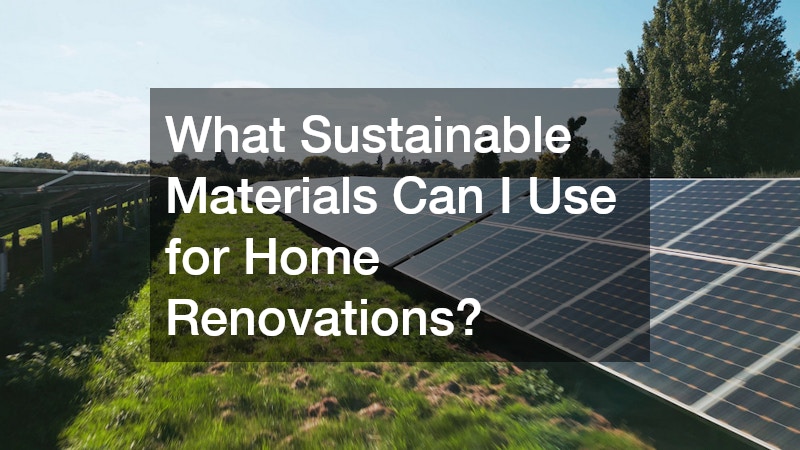Sustainable living has become more than just a trend—it’s now a necessity for the future of our planet and the health of our communities. As environmental awareness grows, homeowners are looking for practical, affordable ways to reduce their carbon footprint without sacrificing comfort or design. The good news is that going green doesn’t always require massive investments or cutting-edge technology. Many small, strategic upgrades can make a meaningful difference in your home’s energy use, water consumption, and overall environmental impact.
Every step toward sustainability counts. By improving efficiency and choosing eco-friendly materials, homeowners can enjoy lower utility costs while contributing to global efforts to conserve energy and reduce waste. Whether it’s upgrading your boiler system, improving insulation, or installing solar panels, even modest improvements can lead to significant savings over time.
This comprehensive guide explores cost-effective and practical solutions that make homes more sustainable. We’ll cover everything from energy-efficient heating and cooling systems to green materials, landscaping, and automation. These ideas will help you transform your living space into an environmentally responsible home that supports both personal comfort and planetary well-being.
What Are the Most Cost-Effective Green Home Improvements?

One of the easiest ways to make your home more eco-friendly is by starting with affordable improvements that deliver measurable energy savings. Simple changes like sealing air leaks, adding insulation, and switching to LED lighting can drastically reduce your utility bills and environmental impact.
Upgrading your boiler system is another powerful way to cut energy use. Older boilers often waste fuel due to inefficient combustion or poor insulation. Modern, high-efficiency models use less energy to produce the same amount of heat, lowering both costs and emissions. Some new systems even integrate with renewable energy sources, allowing you to use biofuels or solar-assisted heating for added sustainability.
Other low-cost improvements include installing programmable thermostats, using low-flow water fixtures, and replacing single-pane windows with double or triple-glazing. These upgrades not only improve comfort but also reduce the overall energy demand of your home. Even small actions, such as weatherstripping doors or upgrading to Energy Star-rated appliances, can collectively make a big impact.
Sustainability isn’t about replacing everything overnight. It’s about making steady, meaningful changes that improve efficiency over time, leading to a cleaner, greener, and more affordable home.
How Can I Make My Home More Energy-Efficient?
Energy efficiency lies at the heart of any sustainable home. The more efficiently your home uses power, the less strain it places on the environment—and your budget.
The first step is to evaluate your heating, ventilation, and air conditioning (HVAC) systems. Many homeowners find that their existing systems consume more energy than necessary due to age or poor upkeep. Consulting professionals who specialize in HVAC supply can help you find the right components to optimize your current setup or upgrade to a more efficient system.
Adding proper insulation to walls, attics, and floors is another crucial improvement. Insulation prevents heat loss in winter and keeps interiors cool in summer, reducing the need for excessive heating or air conditioning. Similarly, upgrading to energy-efficient windows can dramatically improve temperature regulation.
Lighting also plays a significant role. Replacing incandescent bulbs with LEDs can reduce lighting-related energy consumption by up to 80%. Incorporating natural light through skylights or reflective surfaces can further minimize dependence on artificial lighting.
Finally, consider energy monitoring systems that track your household’s usage patterns. These devices provide insights into where energy is wasted, allowing you to adjust behaviors and settings for better efficiency. A combination of high-quality materials, smart technology, and consistent maintenance will ensure long-term energy savings.
Are There Eco-Friendly Options for Home Heating and Cooling?
Absolutely. Heating and cooling are among the largest sources of household energy consumption, so upgrading to eco-friendly systems is one of the most effective ways to improve sustainability.
Homeowners can start by scheduling regular HVAC maintenance services to ensure their systems are running efficiently. A well-maintained system uses less power, lasts longer, and provides more consistent comfort. Replacing clogged filters, sealing duct leaks, and cleaning coils are simple yet essential maintenance steps.
For greener alternatives, heat pumps have become a leading choice. They use electricity to transfer heat instead of generating it, making them far more efficient than traditional furnaces or air conditioners. Geothermal heat pumps, which draw energy from the ground, offer even greater efficiency and lower long-term costs.
Radiant floor heating is another environmentally friendly option, particularly when powered by renewable sources. Coupled with smart thermostats, these systems allow for precise temperature control, minimizing energy waste.
When choosing new heating and cooling solutions, focus on systems that meet Energy Star or similar efficiency certifications. Investing in eco-friendly HVAC systems reduces your carbon footprint and enhances indoor air quality—benefiting both the planet and your household.
What Sustainable Materials Can I Use for Home Renovations?

Sustainability extends beyond energy usage—it also includes the materials used in construction and renovation. Choosing eco-friendly materials helps minimize environmental impact, reduce waste, and often improves indoor air quality.
When undertaking larger projects, such as furnace installation or structural renovations, consider using recycled or reclaimed materials wherever possible. Reclaimed wood, for example, adds character and reduces the need for new lumber. Recycled steel, bamboo flooring, and natural stone are durable, renewable, and visually appealing choices.
Low-VOC (volatile organic compound) paints and finishes are another essential feature of sustainable design. These materials release fewer harmful chemicals into the air, improving overall indoor health. Similarly, using locally sourced products reduces transportation emissions and supports local economies.
In the kitchen and bathroom, opt for recycled glass or composite countertops, and choose cabinetry made from sustainable or certified wood sources. Green insulation materials, such as cellulose or sheep’s wool, provide excellent thermal performance with minimal environmental impact.
By selecting the right materials, homeowners can ensure their renovation projects align with sustainable principles—creating beautiful, healthy spaces that stand the test of time.
How Can Landscaping Contribute to a Greener Home?
Landscaping is an often-overlooked area of sustainability, yet it plays a major role in energy efficiency, air quality, and stormwater management. Strategic landscaping can reduce heating and cooling costs, prevent erosion, and promote biodiversity.
Working with local electrical services may be beneficial when installing energy-efficient outdoor lighting or irrigation systems. Modern smart lighting uses LED bulbs and motion sensors to minimize power use while enhancing safety and aesthetics.
Planting shade trees on the south and west sides of your home can lower summer cooling costs by blocking sunlight, while allowing passive solar heating during winter. Native plants are ideal for sustainable landscaping because they require less water and maintenance. Replacing sections of lawn with drought-tolerant vegetation or permeable paving also helps reduce water waste and runoff.
Rain gardens and green driveways help manage stormwater naturally, filtering pollutants before they reach local waterways. Composting organic waste further enhances soil health and reduces landfill contributions.
Sustainable landscaping not only improves your home’s energy performance but also creates a more inviting, eco-conscious outdoor space that benefits both you and the environment.
What Are the Benefits of a Green Roof?
A green roof—one covered with vegetation rather than traditional roofing materials—offers numerous environmental and economic benefits. It acts as natural insulation, regulates temperature, and supports local ecosystems.
Consulting a residential electrician before installing a green roof is recommended, especially if the project involves solar panels, lighting, or other electrical components. Proper planning ensures that both the roof’s structure and electrical systems function safely and efficiently together.
Green roofs reduce stormwater runoff by absorbing rainwater and releasing it gradually. They also extend the life of roofing membranes by shielding them from UV rays and temperature fluctuations. The vegetation layer improves air quality by filtering pollutants and producing oxygen, while the soil adds an additional barrier against heat loss.
For urban environments, green roofs offer a much-needed patch of greenery, reducing the “heat island” effect caused by concrete and asphalt. They can even be designed as rooftop gardens, providing food or recreational space for residents.
Although installation costs may be higher initially, the long-term benefits—including energy savings and increased property value—make green roofs a sound investment in sustainability.
How Do I Implement Water-Saving Solutions in the Home?

Water conservation is a key component of sustainable living. Fortunately, many water-saving upgrades are inexpensive and easy to implement.
Partnering with professional electrical contractors can help integrate smart irrigation and water-monitoring systems into your home. These systems automatically adjust water usage based on soil moisture and weather conditions, reducing waste while maintaining healthy landscapes.
Indoors, install low-flow faucets, showerheads, and dual-flush toilets. Modern fixtures provide strong water pressure while using significantly less water. Fixing leaks promptly can also prevent thousands of gallons of wasted water each year.
Collecting rainwater in barrels or cisterns provides a renewable water source for outdoor use. Greywater systems, which recycle lightly used water from sinks or laundry, can further reduce dependence on municipal supplies.
Incorporating drought-resistant plants, mulch, and permeable surfaces helps conserve water outdoors. By combining these solutions, homeowners can make a substantial impact on water conservation while lowering utility bills.
What Role Does Home Automation Play in Sustainability?
Home automation technologies are transforming how we manage energy and resources. Smart systems give homeowners greater control over energy consumption, improving efficiency and reducing waste.
Consulting EV charger installers is a great first step toward modernizing your home’s electrical infrastructure. Electric vehicle (EV) charging stations encourage cleaner transportation and can integrate with home automation systems for energy management.
Smart thermostats learn your schedule and adjust heating and cooling automatically, reducing unnecessary energy use. Automated lighting systems can turn off lights when rooms are unoccupied, and smart plugs can monitor and cut standby power to appliances.
Integrated home energy management systems track electricity usage in real-time, allowing you to make informed adjustments. Combined with renewable sources like solar energy, automation can dramatically reduce your household’s carbon footprint.
The convenience of automation also supports long-term sustainability habits. By making energy management effortless, these systems ensure consistent savings and environmental benefits without requiring constant attention from homeowners.
How Can I Choose Eco-Friendly Furniture and Decor?
Sustainability in home design extends beyond structure and systems—it also includes how you furnish and decorate your space. Eco-friendly furniture and decor prioritize durability, recyclability, and responsible sourcing.
Working with professionals experienced in generator service can ensure that any electrical or lighting additions for your decor operate efficiently and safely, especially for off-grid or backup energy systems.
When shopping for furniture, look for pieces made from reclaimed wood, bamboo, or metal rather than plastic. Choose items certified by organizations such as the Forest Stewardship Council (FSC), which ensures wood products come from responsibly managed forests.
Opt for textiles made from organic cotton, linen, or recycled fibers. Avoid materials treated with harmful chemicals or flame retardants, which can release toxins into the air.
Minimalist design also aligns well with sustainability. Buying fewer, higher-quality items that last longer reduces waste and overconsumption. Upcycling or refinishing old furniture gives new life to existing pieces, cutting down on landfill waste.
With thoughtful selection, furniture and decor can reflect your personal style while reinforcing your commitment to sustainability.
What Are the Financial Incentives for Making Green Upgrades?

Many homeowners hesitate to make green upgrades due to perceived upfront costs. However, a variety of financial incentives can make sustainable improvements far more affordable.
Installing solar panels remains one of the most effective ways to reduce energy costs and increase property value. Federal and state programs often provide tax credits, rebates, or low-interest loans to offset installation expenses. Over time, solar systems typically pay for themselves through energy savings and potential energy buyback programs.
By taking advantage of available incentives and long-term savings, homeowners can make sustainable upgrades without straining their budgets—making eco-friendly living both achievable and financially rewarding.
Creating a greener home doesn’t have to mean large expenses or complex renovations. With thoughtful planning and incremental upgrades, any homeowner can make meaningful progress toward sustainability. From optimizing boiler systems and HVAC maintenance services to integrating solar panels and smart technologies, each improvement contributes to a cleaner, more efficient future.
Affordable green upgrades reduce energy consumption, lower water usage, and improve indoor comfort—all while increasing property value. As more homeowners embrace sustainability, the collective impact will help drive long-term environmental change.
The path to a sustainable future starts at home. By taking small, consistent steps today, you can enjoy a more efficient household, a healthier environment, and lasting financial benefits for years to come.
